holiday rentals in italy
As the birthplace of the Roman Empire and the Renaissance, it's not surprising that Italy should be so rich in masterpieces of art and architecture, or that it should have more UNESCO World Heritage cultural sites than any other country in the world.
But Italy's top attractions for tourists are not all art and architecture; the country is blessed with lakes, mountains, and a dramatic coastline that give it outstanding natural attractions, as well. You could plan an entire itinerary inspired by a single interest, from Renaissance art to hiking, but most first-time visitors like to get a sampling of the best Italy offers in several different kinds of experiences.
The attractions that follow show off Italy's art, architecture, stunning landscapes, and history, and provide opportunities for active pursuits, as well. To be sure you find the best places to visit and things to do, plan your itinerary using this list of the top attractions in Italy.
1. Colosseum
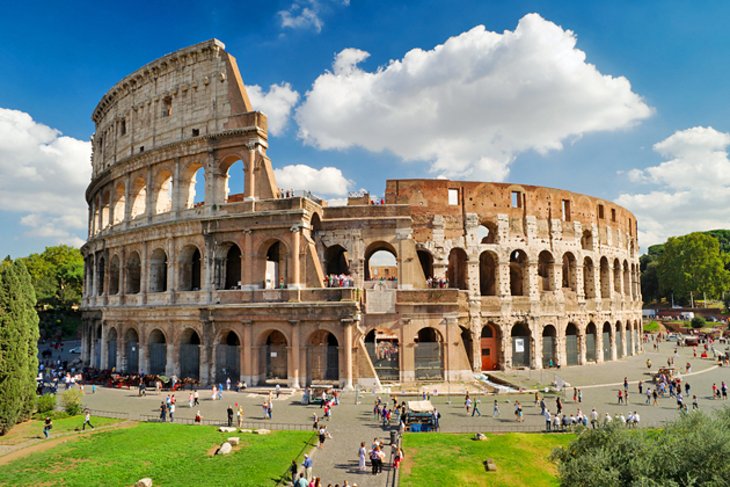
This huge amphitheater, the largest of its kind ever built by the Roman Empire and the largest of their constructions to survive, remained a model for sports facilities right up to modern times. Built by Vespasian in AD 72 and enlarged by the addition of a fourth story by his son, Titus, it was a venue for public spectacles and shows - even mock sea battles.
A wooden floor that was 83 by 48 meters covered two additional underground stories with tunnels, rooms, cells, and passages that provided space for gladiators, workers, wild animals, and storage.
Today, the structure stands in stark contrast to the modern development that surrounds it and is a prominent reminder of ancient times and the extensive history of Rome.
2. Florence Duomo Santa Maria del Fiore
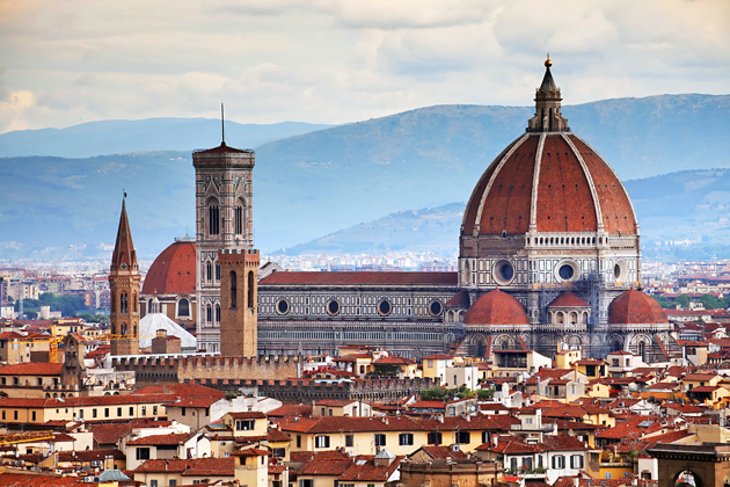
Regarded as one of the finest cathedrals in the world, the Duomo Santa Maria del Fiore, or the Cathedral of Santa Maria del Fiore, dominates the Florence skyline. The cathedral was built between the 13th and 15th centuries, with the most famous piece being the extraordinary dome, completed by Filippo Brunelleschi in 1434.
The cathedral's bell tower stands close beside the cathedral in Piazza del Duomo, covered in the same patterned marble typical of Tuscan Romanesque architecture.
Designed by Giotto, the campanile stands 82 meters tall, and you can climb the 414 steps up to a viewing platform with fantastic views of the city and the dome.
Opposite the Duomo is a magnificent baptistery, famed for its bronze paneled doors by Lorenzo Ghiberti. To see the original, exquisitely crafted panels, which have been replaced by exact replicas to protect the originals from weathering, visit the Museo dell'Opera del Duomo, the cathedral museum.
3. The Grand Canal in Venice

A gondola ride through the canals of Venice is a tradition that travelers have been enjoying for centuries. Venice is a city of islands, and the canals have long been the city's main streets, connected by a labyrinth of narrow passageways.
The Grand Canal is the largest and most famous of these waterways, cutting a wide S-shaped route through the city. Along its sides are the grandest of the palaces once owned by the wealthiest and most powerful families of the Venetian Republic. The best way to see many of the grand palaces, whose fronts face the water, is from a Vaporetto ride along the Grand Canal.
Be sure your gondola ride - and your sightseeing explorations on foot - include some of the more atmospheric smaller canals, lined by old buildings that have remained relatively unchanged for hundreds of years.
4. Pompeii and Mount Vesuvius
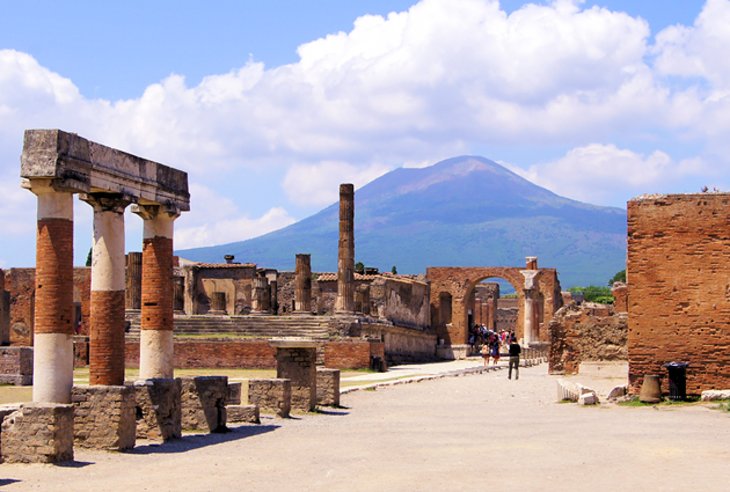
The still smoking volcano of Mt. Vesuvius looks down on the remains of the city it destroyed in AD 79. But that same eruption also preserved many of the city's art treasures: frescoes, mosaics, and sculptures that were encased in the lava as it cooled.
Several centuries of excavations have revealed the remains of houses, markets, baths, temples, theaters, streets, and human remains. Visitors can tour the site, walk along the old streets scarred by the tracks of chariots, and see the engineering used by Romans more than 2,000 years ago.
Near Pompeii is the excavated city of Herculaneum, destroyed by the same eruption in AD 79, but buried in lava and ash that solidified and froze the town just as it was. You can combine visits to the two sites in one day, but a longer stay allows time to ascend to the very rim of still-active Vesuvius.
5. Leaning Tower of Pisa
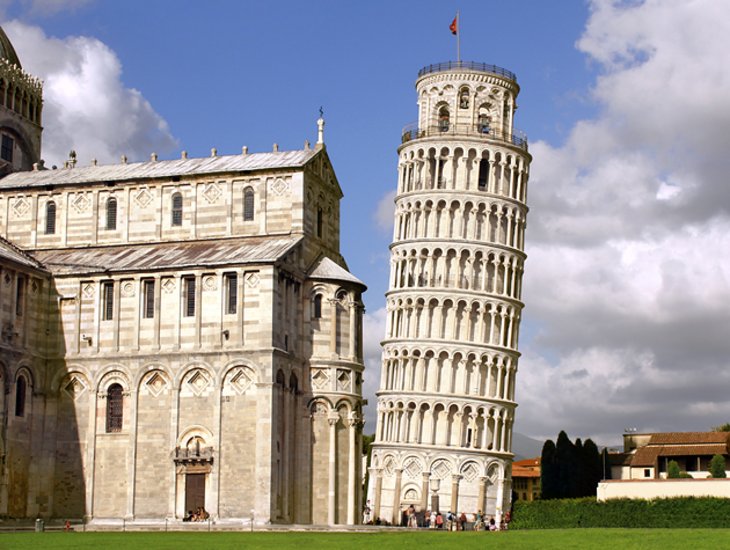
The Leaning Tower of Pisa (La Torre Pendente) is just one of many attractions in the city of Pisa, one whose world fame comes not from the considerable elegance of its design, but from a flaw. Work began on the tower in the 1100s, and the sinking, which led to the lean, began by the time the tower reached the third story.
Leaning more and more over the centuries, before restoration work in the 1990s, it was predicted to topple over by the year 2000. Today, visitors can climb up the stairs of the tower for a fabulous view over the city.
The Leaning Tower stands on the Piazza dei Miracoli, a setting it shares with the beautiful Romanesque Cathedral of Santa Maria Assunta and a round freestanding baptistery. Each of these features outstanding works of medieval stone carving.
6. Lake Como
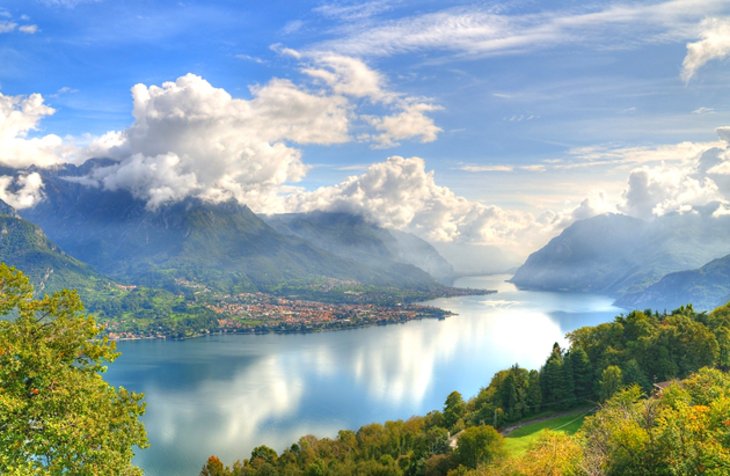
Lake Como is one of Italy's most scenic areas, surrounded by mountains and lined by small picturesque towns. A haunt of the wealthy since Roman times, the lake has many opulent villas and palaces along its wooded shores; Villa Balbianello and Villa Carlotta are the best known, both surrounded by gardens that are open to the public.
The mild climate that makes the lake shore ideal for gardens is also a draw for tourists, with characteristics similar to that of the Mediterranean. Along with the resort towns around the lake, there's an 11th-century abbey.
At the foot of the lake, the small city of Como, important since Roman times, is a short train ride from Milan. From its waterfront, you can embark on excursions around the lake on regularly scheduled steamers that make visiting the lakeside attractions easy.
7. Amalfi Coast
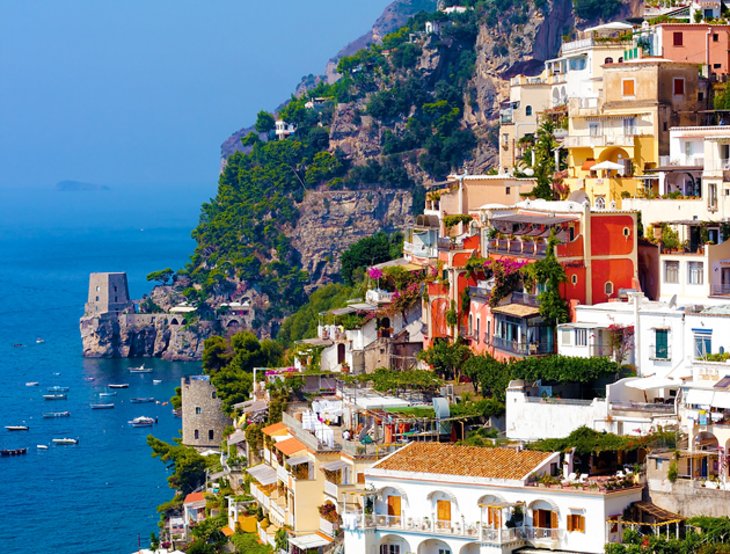
The Amalfi Coast, a UNESCO World Heritage Site, is a stunning stretch of coastline along the Sorrentine Peninsula, south of Naples and Sorrento. Hillside towns are built precariously along the steep mountainsides that cascade down to the sea.
The main towns along here are Positano and Amalfi, with its colorfully domed cathedral. You can tour the coast by road, or hop between towns by boat for different perspectives of the dramatic and almost vertical shore.
While walking paths stretch all along the coast, the most breathtaking scenery for walkers is the Sentiero degli Dei, Footpath of the Gods, at the western end from Positano.
8. Cinque Terre
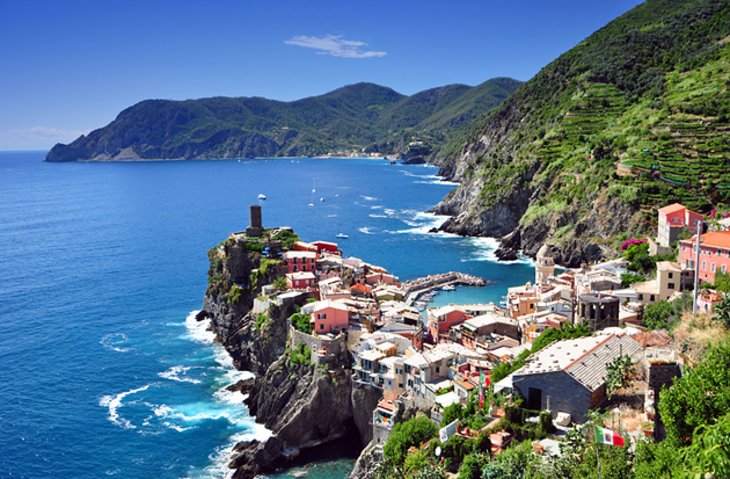
Cinque Terre is a lovely coastal region with steep hills and sheer cliffs overlooking the Mediterranean. The five picturesque villages of Monterosso al Mare, Vernazza, Corniglia, Manarola, and Riomaggiore can be reached by several means, joined to each other by walking paths, a railroad that tunnels through the headlands to emerge at each town, or a scenic narrow road high on the hillside above.
Hiking between the villages is one of the most popular things to do as it gives travelers the chance to enjoy the landscape. The small towns have maintained a feel of old-world fishing villages and offer a sense of remoteness even in the face of modern tourism.
9. Vatican City: Basilica of St. Peter, Sistine Chapel & Vatican Museums
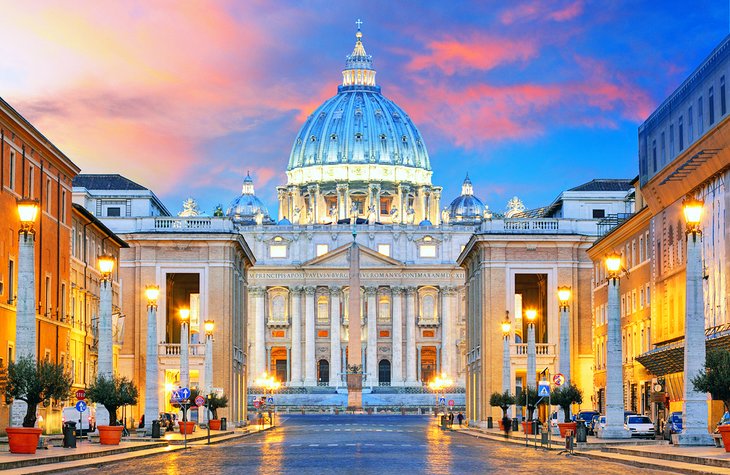
The Vatican is home to some of the world's most priceless art and art collections. The centerpiece is the great Basilica of St. Peter, with the tomb of St. Peter and one of Michelangelo's most poignant works, the Pieta.
Outside is St. Peter's Square, where the Pope addresses followers. The walls and ceilings of the Sistine Chapel are covered with frescoes by Michelangelo, and in the Vatican Palace are works by Raphael and other major artists.
More art fills the Vatican Museums, a group of individual collections, including sacred art, Etruscan antiquities, sculptures, maps, papal carriages, even vintage cars.
10. The Uffizi Gallery in Florence
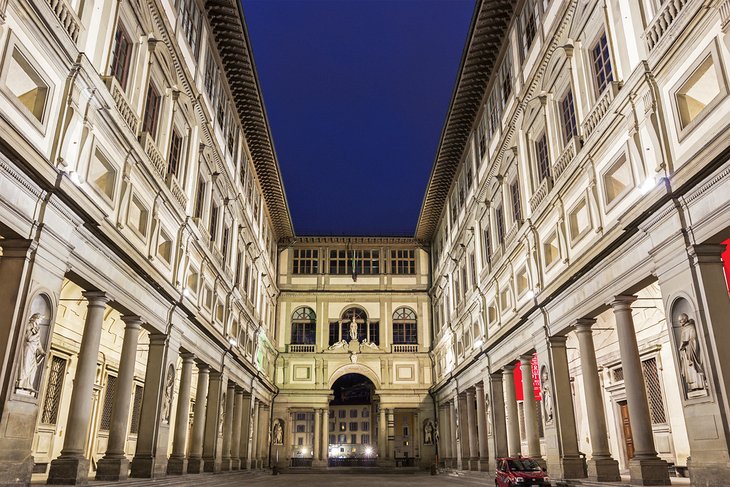
In addition to being one of the world's foremost art museums, the Uffizi is a one-stop history of Italian Renaissance art. Although it contains works by some of the great masters of western art, its greatest treasure is its collection of paintings that show step-by-step the evolution in painting that occurred here from the 14th to the 16th centuries.
Here, you will see the first experiments with perspective, as well as some of the early portraits as painters moved beyond religious art, and some of the first use of naturalistic and scenic backgrounds in religious art.
Be sure to see the Uffizi's most famous work: Botticelli's Birth of Venus.
11. St. Mark's Basilica
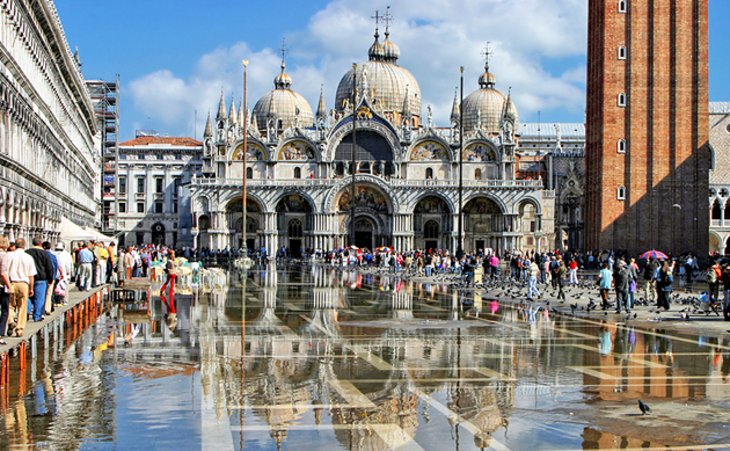
One of the most important tourist sites in Venice is St. Mark's Basilica, whose ornate Byzantine-inspired façade and domes overlook Piazza San Marco, St. Mark's Square. The building itself is a work of art, with a mix of architectural styles heavily influenced by the Byzantine Empire, showing Venice's long trade connections to the East.
Highlights of the vast interior are the brilliant mosaics that line its domes and vaults, and the high altar covered in gold and jewels. The Treasury contains more glittering gold and jewels.
For an unforgettable view of St. Mark's Square, the tall campanile and the clock tower, climb to the porch to stand among the iconic horses.
Next to the basilica is the Doge's Palace, also filled with priceless masterpieces of Italian art.
12. Pantheon
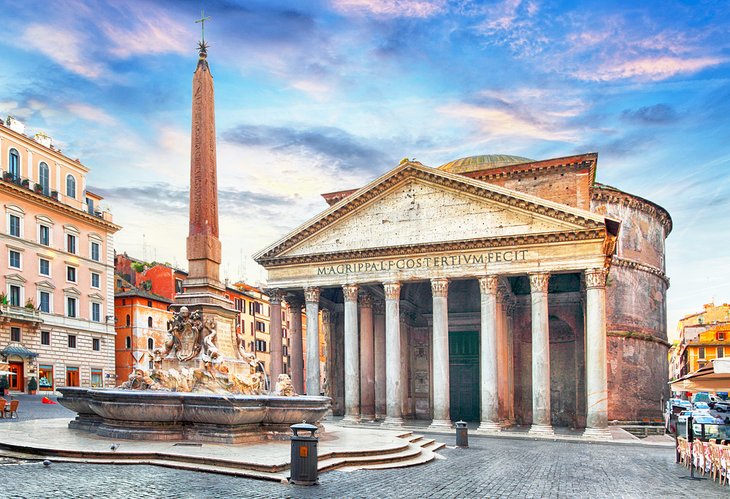
The Pantheon, an exceptionally well preserved remnant from Roman times, reveals the incredible architectural achievements of the Roman Empire.
The precise proportions of the building, dedicated to the planetary gods, with the height equal to the diameter, and a single beam of light entering the room from the top of the dome, were intended to represent the firmament and the sun.
Disused after early Christian kings forbade use of a pagan temple as a church, it was later consecrated by the Pope in AD 609. Italian Kings, the Renaissance painter Raphael, and other great Italians are buried in the Pantheon.
13. Roman Forum
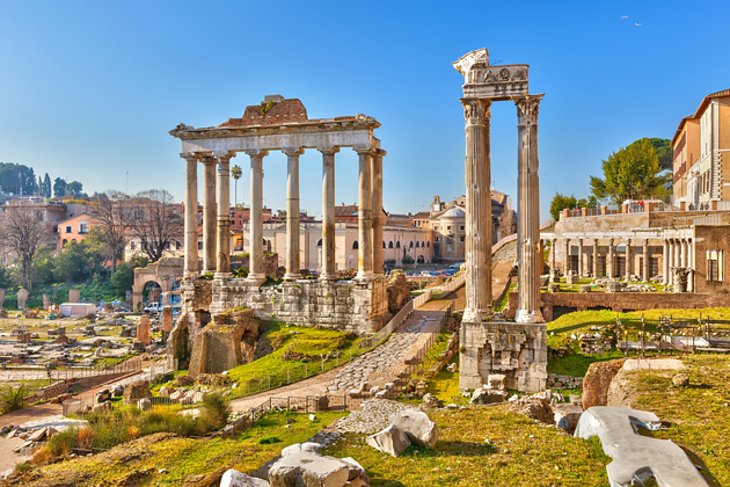
The Roman Forum may require a little imagination - or a good tour guide -- to understand exactly what this area once looked like and how it was used. However, its historical significance as the heart of the Roman Empire cannot be overstated.
Temples were built first, then public buildings, and soon the area became Rome's governmental center. Commerce followed with the building of market halls that made the Forum the hub of public life for the city, and eventually the Roman Empire.
Today, only pillars, partial structures, and foundations of former temples, market halls, courts, and public buildings pay tribute to Ancient Rome, which survived here for a thousand years.
14. Milan Duomo
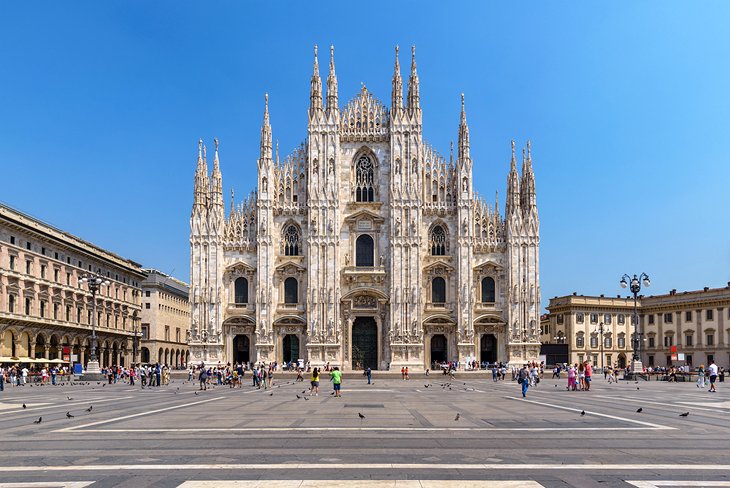
Milan's magnificent Cathedral of Santa Maria Nascente, "Il Duomo" to the locals, is one of the world's largest churches and probably the best example anywhere of the flamboyant Gothic style. Its statue-studded façade (the exterior of the cathedral has a grand total of 2,245 marble statues) and the 135 carved stone pinnacles that crown its roof make quite a first impression, which is reinforced as you step inside.
Fifty-two immense pillars support the soaring ceiling of the nave, and its walls are decorated by the world's largest stained-glass windows. Highlights in the nave are the tomb of Gian Giacomo Medici and a 12th-century bronze candelabrum.
Below the high altar is the crypt and the octagonal chapel with the gold reliquary of San Carlo Borromeo. Under Piazza del Duomo, and reached by stairs near the entrance, are the foundations of a fourth-century baptistery and basilica.
An elevator will take you partway to the roof, where you can walk at a dizzying height among the carved stone pinnacles.
15. Capri
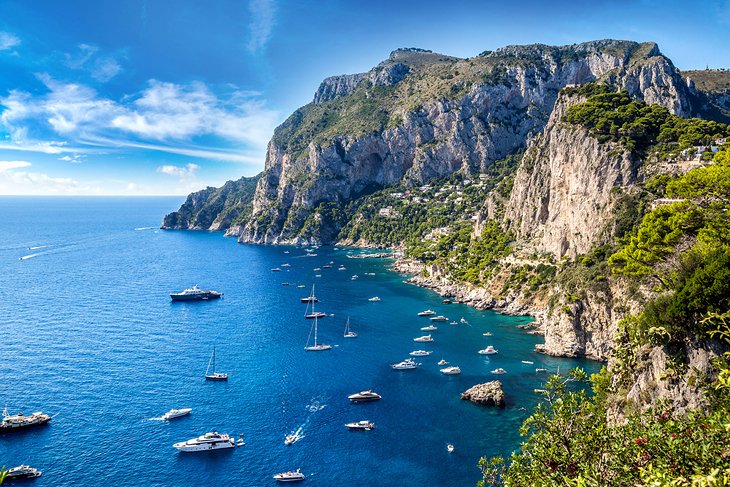
The Blue Grotto is one of the most visited spots in all Italy, but there are other reasons for taking the short boat ride from Naples, Sorrento, or the Amalfi Coast to the fabled Isle of Capri. The steep rocky island juts from an intensely blue sea, its craggy cliffs softened by green pines and tropical plants.
The Blue Grotto is only one of the sea caves that cut its cliffs, and the best way to see these, along with the three signature rocks off the south coast known as the Faraglioni, is on a boat tour around the island. Several villas and gardens are open to tourists, and walking trails invite exploration.
From almost anywhere on the island, you can be certain of a good view. The beautiful Villa San Michele has perhaps the finest views on the island from its gardens, which overlook the Marina Grande from the village of Anacapri, high above. You can get there by bus or, for the energetic, by climbing the ancient Phoenician stairs carved into the steep hillside.
